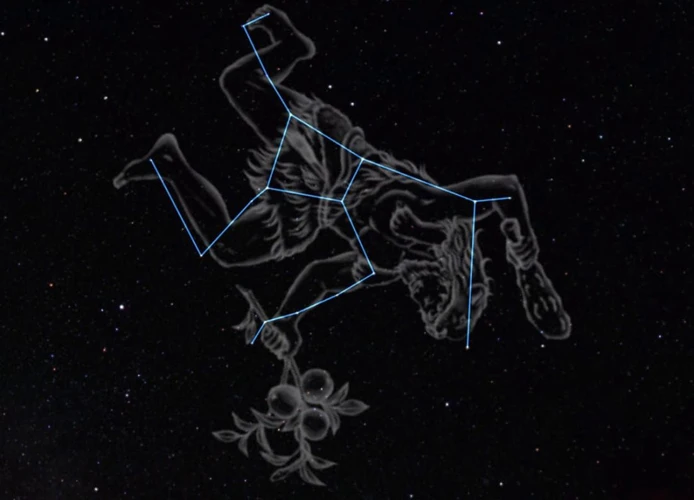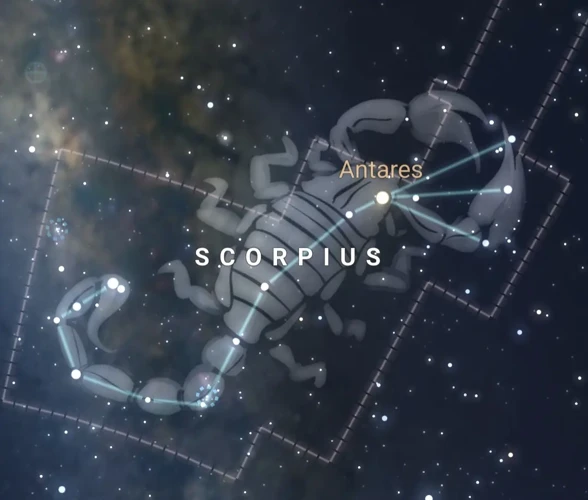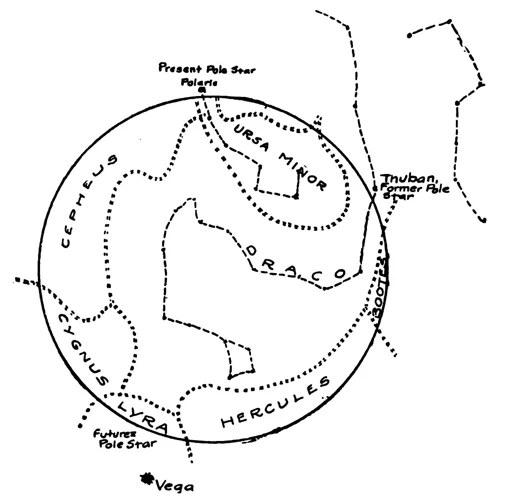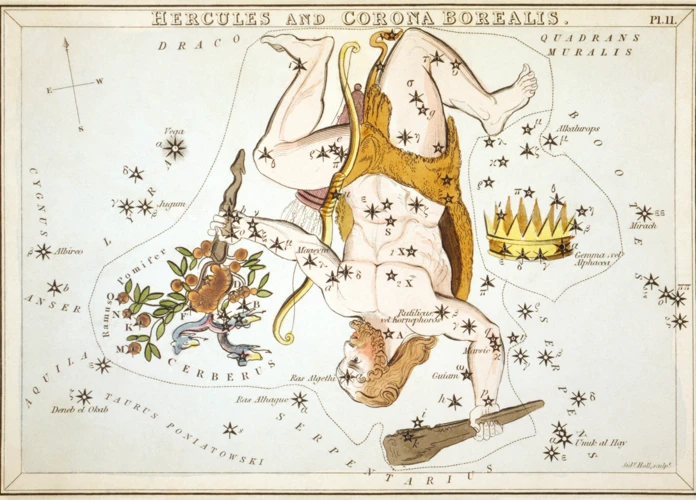Hercules, the legendary hero of Greek mythology, has captivated the imaginations of people for centuries. From his birth as the son of Zeus to his heroic labors and eventual immortalization in the night sky, the story of Hercules is a tale of strength, courage, and triumph over incredible odds. In this article, we will delve into the ancient stories of Hercules, exploring the details of his labors and the constellations that bear his name. Prepare to be amazed as we uncover the myths, legends, and wonders of the mighty Hercules.
Hercules: The Heroic Son of Zeus

Born as the son of Zeus, Hercules embodies the strength and heroism that reflects his divine lineage. Hercules was conceived when Zeus, the king of the gods, took the form of Amphitryon, the husband of Hercules’ mother, Alcmene. Raised as a mortal, Hercules displayed extraordinary strength from a young age, often astonishing those around him. His physical prowess became evident as he grew, with his massive size and muscular build setting him apart from other mortals. As the son of Zeus, Hercules possessed a unique blend of god-like power and mortal vulnerability, making him an intriguing and complex character in Greek mythology. His remarkable abilities and his connection to gods and mortals set the stage for his incredible adventures and the challenges he would face throughout his life.
Birth and Childhood
In his birth and childhood, Hercules experienced both the marvels and hardships of being a demigod. As the son of Zeus and the mortal woman Alcmene, his upbringing was not without challenges. From the moment of his birth, Hercules displayed signs of his divine heritage. Upon seeing the newborn Hercules, his stepmother Hera, known for her jealousy towards Zeus’ illegitimate children, sent two serpents to destroy him. However, to Hera’s surprise, the infant Hercules effortlessly strangled the serpents with his bare hands, foreshadowing his extraordinary strength. Hercules was raised in the city of Thebes, where he developed a close bond with his mortal family and received proper training and education. However, his divine lineage brought both blessings and tribulations, as Hercules’ exceptional physical strength often caused turmoil and confusion during his childhood. In his early years, Hercules struggled to control his immense power, inadvertently causing accidents and even unintentional harm to those around him. This dichotomy of extraordinary strength and the challenges it presented would shape his path as a hero. (For more information on other fascinating figures in Greek mythology, check out the article on Perseus and Andromeda mythology.)
The Oracle’s Prophecy
The Oracle’s Prophecy played a crucial role in the life of Hercules, shaping his destiny and setting him on a path of incredible feats. According to the myth, Hercules sought guidance from the Oracle of Delphi to gain clarity about his future. The Oracle, who was believed to possess the power of prophecy, delivered a fateful prediction. She revealed that Hercules would perform twelve labors, tasks of immense difficulty and danger, as a form of atonement for the crimes he committed unknowingly. These labors would test his strength, endurance, and courage, and would ultimately lead to his redemption and immortality. The Oracle’s prophecy set Hercules on a journey that would see him confront and overcome seemingly insurmountable challenges, leaving an indelible mark on his legacy. The weight of this prophecy and its impact on Hercules’ life cannot be understated, as it propelled him towards an arduous but heroic path of self-discovery and redemption. To learn more about other mythological constellations and their origins, you can read about Sagittarius, the Centaur Archer or explore the mythological origins of Ursa Major and Ursa Minor.
The Twelve Labors of Hercules
The Twelve Labors of Hercules are the most renowned exploits of this heroic figure, showcasing his exceptional strength, bravery, and determination. These labors were assigned to Hercules as a punishment by King Eurystheus, who resented Hercules for his noble birthright and wanted to test his limits. The labors varied in nature and difficulty, taking Hercules across Greece and beyond. Here is a summary of the Twelve Labors:
1. The Nemean Lion: Hercules was tasked with slaying the fierce lion, whose impenetrable golden fur made it invulnerable to weapons.
2. The Lernean Hydra: This monstrous serpent had multiple heads that multiplied when one was cut off, making it a formidable opponent for Hercules.
3. The Ceryneian Hind: Hercules was ordered to capture the sacred deer with golden antlers, which was said to be as swift as the wind.
4. The Erymanthian Boar: Hercules had to capture a massive and aggressive boar that terrorized the region of Mount Erymanthus.
5. The Augean Stables: Hercules was tasked with cleaning the incredibly filthy stables of King Augeas in a single day, a seemingly impossible feat.
6. The Stymphalian Birds: Hercules had to rid the Stymphalian marshes of a flock of man-eating birds with sharp bronze feathers.
7. The Cretan Bull: This ferocious bull, a gift from the sea god Poseidon, terrorized the island of Crete and had to be subdued by Hercules.
8. The Mares of Diomedes: Hercules had to capture the flesh-eating horses of the Thracian king Diomedes and bring them back to Eurystheus.
9. The Belt of Hippolyta: Hercules was charged with obtaining the magical girdle of the Amazon queen Hippolyta.
10. The Cattle of Geryon: Hercules had to bring back the three-headed, six-armed monster Geryon’s prized cattle from a distant land.
11. The Apples of the Hesperides: Hercules was tasked with fetching the golden apples from the tree of the Hesperides, which were heavily guarded by nymphs and a serpent.
12. The Capture of Cerberus: As his final labor, Hercules was required to bring back the fearsome three-headed dog, Cerberus, from the depths of the Underworld.
These Twelve Labors showcase the extraordinary strength and courage of Hercules, as he overcame seemingly insurmountable challenges one by one. Each labor pushed him physically and tested his cunning, proving his status as a truly legendary hero.
Hercules: The Immortalized Constellation

The heroic deeds of Hercules became so legendary that he was immortalized in the night sky as a constellation bearing his name: Hercules. The origin of the Hercules constellation can be traced back to ancient times, where it was recognized as a collection of stars representing the mythical hero. This constellation is located in the northern hemisphere and can be observed during different seasons depending on the viewer’s location. To identify Hercules in the night sky, look for its distinguishing features, including its prominent asterism known as the “Keystone,” which forms the torso of Hercules. This constellation is surrounded by a variety of other constellations, each with their own mythological significance. Exploring the Hercules constellation allows us to connect with the ancient stories and celebrate the enduring legacy of this legendary hero.
The Origin of the Constellation
The origin of the Hercules constellation can be traced back to Greek mythology. Hercules, also known as Heracles, was a demigod who achieved immortality after completing his twelve labors. Upon his death, Hercules was granted a place among the gods on Mount Olympus. To honor his heroic deeds, Zeus decided to immortalize Hercules in the stars. He placed the mighty hero’s image in the night sky, forming the Hercules constellation. This celestial recognition serves as a testament to Hercules’ strength and his legendary status. The constellation of Hercules is a symbol of bravery and resilience and continues to inspire awe and wonder among stargazers and mythology enthusiasts alike.
Key Stars and Features
In the night sky, the constellation of Hercules stands as a testament to the heroic deeds of the legendary figure. With its bright stars and distinctive shape, the constellation is a sight to behold. One of the key stars in Hercules is Alpha Herculis, also known as Ras Algethi. This red giant star is one of the brightest in the constellation and is easily recognizable due to its reddish hue. Another notable star is Kornephoros, also known as Beta Herculis. It is a blue-white giant located at the tip of Hercules’ right arm. These stars, along with others that make up the constellation, create a pattern that resembles a figure holding a club or a bow. This representation symbolizes Hercules’ strength and prowess as a hero. The constellation of Hercules serves as a reminder of the ancient myths and the enduring legacy of the mighty hero. To learn more about other constellations and their mythological origins, check out our articles on Sagittarius, Perseus and Andromeda, and Ursa Major and Ursa Minor.
The First Labor: The Nemean Lion

The first labor assigned to Hercules was to slay the ferocious Nemean Lion, a monstrous beast that terrorized the region of Nemea. The Nemean Lion was said to have an impenetrable golden hide, making it invulnerable to weapons. To defeat such a formidable opponent, Hercules devised a clever strategy. Armed only with his bare hands, he ventured into the lion’s den, where he engaged in a fierce battle with the beast. Hercules initially struggled to pierce the lion’s impenetrable hide, but he eventually discovered a weak point—its mouth. With his tremendous strength, he strangled the Nemean Lion and finally defeated it. Overcome with pride and relief, Hercules skinned the lion, donning its invulnerable hide as a testament to his victory. The skin became an iconic symbol of his strength and resilience. In the night sky, the constellation Leo is often associated with the Nemean Lion, serving as a celestial reminder of Hercules’ first labor and his indomitable spirit.
The Nemean Lion’s Mythology
In Greek mythology, the Nemean Lion was a terrifying creature that haunted the region of Nemea. According to the myth, this monstrous lion was born from the union of the moon goddess, Selene, and the giant Typhon, making it both powerful and ferocious. The Nemean Lion was invulnerable to mortal weapons, as its golden fur made it impervious to harm. Its massive size and razor-sharp claws struck fear into the hearts of all who encountered it. The lion’s reign of terror was especially devastating, as it would ambush unsuspecting travelers and devour them whole. The people of Nemea lived in constant fear, unable to defeat the fearsome beast. This led to the Nemean Lion becoming a symbol of chaos and destruction in Greek mythology, representing the untamed forces of nature that could only be subdued by a hero of exceptional strength and skill.
Hercules and the Lion: The Epic Battle
In one of his famed labors, Hercules faced a formidable opponent, the Nemean Lion. The Nemean Lion’s Mythology tells the tale of a monstrous beast with impenetrable golden fur and razor-sharp claws. The Nemean Lion terrorized the region of Nemea, preying on humans and livestock. Ordinary weapons could not harm this invulnerable creature, and it seemed that nothing could stop its reign of terror. Hearing of the lion’s atrocities, Hercules set out to rid the land of this fearsome menace. Hercules and the Lion’s Epic Battle was a true test of strength and bravery. Armed with his trusty bow and arrow, Hercules tracked the lion to its cave, where it had taken refuge. Despite the lion’s strength, Hercules engaged in a relentless struggle. Trying to pierce its impenetrable hide only proved futile, so Hercules resorted to his bare hands. With his immense strength, he strangled the lion, eventually overpowering the mighty beast. This epic battle showcased Hercules’ power and his ability to overcome seemingly insurmountable challenges.
The Constellation Connection: Identifying the Nemean Lion
The Nemean Lion, one of the twelve labors undertaken by Hercules, holds a significant place in both mythology and astronomy. According to legend, the Nemean Lion was a terrifying beast with impenetrable golden fur and immense strength. No weapon could harm it, as its skin was impenetrable. Hercules, undeterred by the lion’s reputation, embarked on a courageous mission to slay the creature. After a fierce battle, Hercules managed to strangle the lion with his bare hands. This triumph is immortalized in the night sky through the constellation Leo, the fifth sign of the zodiac. Leo represents the Nemean Lion and is easily recognizable with its distinctive shape of a lion’s head and a backward question mark, resembling a sickle or a hook. The bright star Regulus, also known as the “Heart of the Lion,” marks the lion’s heart. The constellation serves as a reminder of Hercules’ incredible strength and bravery, as well as his victory over seemingly invincible foes. So, when gazing up at the night sky, one can trace Hercules’ legendary encounter with the Nemean Lion by identifying the majestic constellation of Leo.
The Second Labor: The Lernean Hydra
In the second labor of Hercules, he was tasked with defeating the fearsome Lernean Hydra. This monstrous creature was a serpent-like water beast with multiple heads. The legend surrounding the Hydra tells of its regenerative abilities – when one of its heads was severed, two more would grow in its place. Hercules knew that this would be a daunting challenge, but he was determined to succeed. Armed with a sword and his trusted nephew and charioteer, Iolaus, Hercules set out to confront the Hydra in its dwelling near the swamps of Lerna. As the battle commenced, Hercules quickly discovered the difficulty of his task. Every time he would sever one of the Hydra’s heads, two more would emerge. Realizing that brute strength alone would not be enough, Hercules devised a clever plan. He called upon Iolaus to use a burning torch to cauterize the neck stumps as Hercules struck the heads, preventing any regeneration. With this strategy, Hercules was able to overcome the Hydra and emerge victorious. As a result of his triumph, the Hydra is forever linked to Hercules, both in myth and among the stars.
Unraveling the Legend of the Lernean Hydra
The Lernean Hydra is one of the most fearsome creatures in Greek mythology, known for its many serpent-like heads and venomous breath. According to legend, the Hydra was the offspring of Typhon and Echidna, two monstrous beings. Unraveling the myth reveals that the Hydra’s lair was located in the swampy area near the city of Lerna, hence its name. The Hydra had the ability to regenerate heads, making it an incredibly challenging opponent for any hero. Its venom was also highly poisonous, capable of killing even immortals. The myth surrounding the Hydra is often associated with the second labor of Hercules, where he was tasked with slaying the creature. The intricate nature of the Hydra’s legend, with its multiple heads and deadly powers, adds an element of mystery and danger to Hercules’ heroic trials. It showcases his determination and resourcefulness as he navigates the treacherous battle against this formidable opponent.
Defeating the Hydra: A Hero’s Triumph
Defeating the Hydra was one of Hercules’ greatest triumphs and a testament to his bravery and resourcefulness. The Hydra was a fearsome monster with multiple heads and venomous breath, making it a formidable adversary. As Hercules faced this formidable opponent, for every head he managed to cut off, two more would grow in its place. It seemed like an impossible task, but Hercules had an ingenious plan. He called upon his nephew, Iolaus, to help him in the battle. As Hercules battled the Hydra, Iolaus quickly cauterized the stumps of the severed heads with a flaming torch, preventing them from regrowing. With this strategy, Hercules and Iolaus worked together systematically, cutting off heads and cauterizing the wounds until finally, they succeeded in defeating the Hydra. This victory marked Hercules’ resourcefulness and determination, as he overcame the seemingly insurmountable challenge with the help of his trusted companion. The tale of Hercules and the Hydra serves as a reminder of the importance of strategy, teamwork, and perseverance – qualities that are often rewarded in the face of seemingly impossible obstacles.
Spotting the Lernean Hydra in the Sky
Spotting the Lernean Hydra in the sky can be an exciting astronomical endeavor. This mythical creature, known for its regenerating multiple heads, has been immortalized in the night sky as a celestial constellation. To locate the Lernean Hydra, one should first identify the constellation of Hydra, the Water Snake. The Hydra constellation stretches across a vast region of the night sky, covering approximately 1300 square degrees. Its head is located near the bright star called Alphard in the constellation of Hydra, making it a good starting point for observation. Following the body of Hydra, one can trace the snake-like pattern formed by the stars to locate the spot where the Hydra’s many heads would be. However, it is important to note that the Lernean Hydra itself is not officially recognized as a distinct constellation, but rather a part of the Hydra constellation. Nevertheless, imagining the Lernean Hydra’s multiple heads while gazing at the stars adds a mythological touch to the celestial tapestry above us.
Conclusion
In conclusion, the ancient stories of Hercules, the heroic son of Zeus, continue to captivate and inspire us to this day. From his birth and childhood to his epic labors and ultimate immortalization, Hercules embodies the virtues of strength, courage, and perseverance. The constellations that bear his name in the night sky serve as a reminder of his incredible feats and the enduring legacy of his heroic actions. Whether it is the Nemean Lion, the Lernean Hydra, or any of the other labors he undertook, the tales of Hercules remind us that ordinary individuals can achieve extraordinary things. So, let the stories of Hercules continue to ignite our imagination and inspire us to overcome any obstacles that come our way.
Frequently Asked Questions
FAQs about Hercules: The Heroic Son of Zeus
1. Who is Hercules? Hercules is a legendary hero from Greek mythology, known for his incredible strength and heroic deeds.
2. Who were Hercules’ parents? Hercules was the son of Zeus, the king of the gods, and the mortal woman Alcmene.
3. What were the Twelve Labors of Hercules? The Twelve Labors were a series of tasks imposed on Hercules as punishment for a crime. They included slaying fearsome creatures like the Nemean Lion and the Hydra, capturing the Golden Hind, and cleaning the Augean stables, among others.
4. What was the Oracle’s prophecy regarding Hercules? The Oracle prophesied that Hercules would gain immortality through great labor, serving as a test of his strength and character.
5. Did Hercules succeed in completing the Twelve Labors? Yes, Hercules successfully completed all Twelve Labors, proving his valor and fulfilling his destiny.
6. What led to Hercules’ downfall? Hercules’ downfall came when he was driven mad by the goddess Hera and inadvertently killed his wife and children.
7. How did Hercules attain immortality? After his death, Hercules was granted immortality and was welcomed into Mount Olympus, the realm of the gods.
8. What is Hercules’ connection to the constellations? Hercules is immortalized in the night sky through the constellation Hercules, which is said to represent his heroic deeds.
9. What are the key stars and features of the Hercules constellation? Some prominent stars in the constellation Hercules include Alpha Herculis (Rasalgethi) and Beta Herculis (Kornephoros). It also contains the globular cluster Messier 13, one of the brightest globular clusters visible in the northern hemisphere.
10. Are there any other constellations associated with Greek mythology? Yes, Greek mythology has a rich influence on constellations. Some notable examples include Sagittarius the Archer, Perseus and Andromeda, and Ursa Major and Ursa Minor, also known as the Great Bear and the Little Bear.








